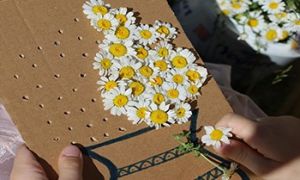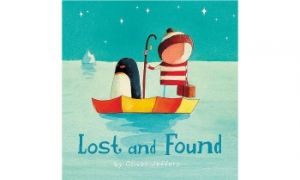To support preschool children transition to school, it is recommended that preschool educators complete a transition to school statement which is sent to the child's school. The Transition to School Statement gives a snapshot of a child’s strengths, perspectives, and personality.
In NSW, Transition To School statements are optional however it is recommended that services complete a statement for preschoolers starting school the following year. The information provided will give the child's school teacher important information that will help the child have a successful start to school by sharing the child's interests, strengths ad preferred way of learning.
The statement:
- summarises a child’s strengths, interests and approaches to learning
- passes this information between families, early childhood educators and teachers
- gives children a voice in the process of meeting new people in the school environment
- helps link the Early Years Learning Framework link to the Early Stage 1 Syllabus
Examples Of What To Include In The Transition To School Statements
- About the family - siblings, living arrangements, languages spoken at home, culture etc.
- Strengths and Interests - child's achievements, their strengths and interests
- Activities and Experiences - what the child enjoys doing at the centre, favourite activities
- Learning Style - teaching strategies you recommend, environments that encourage child's learning
- Services and Support - individual plans or support for the child
- Settling In - how to support the child settling in
- Child's Views - what is the child excited/worried about starting school
Transition Statements is not a report card - the information in the statement helps Teachers get to know the children starting in their class and to plan appropriate learning and teaching programs.
Writing Transition To School Statements
The Transition to School Statement prompts early childhood educators to provide information on learning and development indicators and advice on the intentional teaching strategies for each child they have used. You can include:
Strength Based Approach
This focusses on each child’s strengths and supports Educators to identify areas where focused support or intervention is required to improve each child’s learning and development. It supports Educators to consider and identify strategies that match and extend upon a child’s abilities, skills and dispositions to learning.
For example:
- Rosie is a quiet and reserved child who responds well to encouragement to communicate with trusted people. She is beginning to initiate conversations with her peers and can be supported to remember to include others in play and communication.
- Robert settles best in the morning if given time to say goodbye to his mum and then by taking his hand and leading him to the mat for an activity. This usually takes about 10 minutes and could be an area of continued focus.
- George’s first language is Greek and he communicates confidently in Greek with family members. Some things that have helped George’s English development include: using pictures and objects to show him what you are talking about; repeating simple phrases related to what he is doing; partnering him with a friend during new and whole group activities. Other children also learnt some simple Greek words for greetings, colours and numbers, to share in his culture and have him feel a part of the group.
- Phoebe is able to confidently explore and engage with familiar environments. She requires adult support to explore new environments. She responds well to a conversation or storybook about where/or what is next so that she is able to ‘prepare’ to try something new or to experience an unfamiliar environment
The strength-based approach encourages educators to identify what works for the child, and when and how it works, so that those strategies can be continued and developed.
Reflecting On A Child's Learning and Development
Identifying what children have learnt and how they are developing enables you to write a meaningful Transition Statemen. This in turn enables teachers to make curriculum decisions about how best to support and extend that learning. The following lists questions to ask yourself when reflecting on a child's learning and development, which then can be incorporated into the statements.
Strength/Achievement
- What can the child do on their own?
- What can the child do when provided with educational support?
- When/where/how/with whom does the child learn best?
- What does it look like when the child is learning and developing at their best?
- How and when does the child prefer to communicate?
Concern / Challenge
- When/where/how does the challenge/concern happen?
- How does it impact on the child’s learning and development?
- What, if anything, sets this off (triggers)?
- How often does this happen? • How long does this go on for?
- Has this concern/challenge been discussed with the family? If yes, what did they say?
- Does it happen at home? If yes, what is the family’s strategy at home
Suggested Inclusions
Every Transition Statement needs to tell families and school-based educators what learning and development has taken place briefly, and what strategies have been successfully used to support and extend the child’s learning and development. The following provides a number of inclusions that can strengthen the information in the statements and provides the reader with a valuable insight into each child’s learning and development.
- Prompts and Triggers - Outline what event, situation or circumstance helps or hinders a child’s learning and development. For example, whole group contexts, paired or small group work, multiple instructions given.
- Qualifiers and/or examples - Provide detail on how often something happens, for how long it happens, whether adult support is required and what support has worked. For example, concentrates for up to 10 minutes, accesses art activities 5 times per week, has difficulty expressing emotions when tired.
- Dispositions for learning - Describe the child’s tendencies to respond in characteristic ways to learning. For example, willing to persevere, confident with new experiences.
- Multiple learning styles - Explain how the child constructs and communicates their understanding of the world. In other words, how they process information and convey their understanding to others. For example, through music and rhythm, hands on exploration, verbal and non - verbal language.
- Intentional teaching strategies - Describe what plan, activity or learning sequence has been developed and used successfully to enhance a child’s learning and development, based on a child’s learning dispositions and what they know in any given context. For example, visual supports, verbal reinforcements, tangible resources.
Practical Examples
The examples show various learning and development achievements and/or challenges written using the strength based approach, and provide comments from school educators explaining why the examples are helpful.
- David enjoys being in the company of his peers. He often engages in dramatic play and will act out various roles (e.g. mother, father) with two to three other children. When playing, he confidently expresses his ideas and asks other children for help. When faced with a new learning activity, he benefits from clear 1:1 instructions so he can focus. Once focussed, he will persist with challenging tasks (e.g. fine motor-based activities) especially when given encouragement and praise.
This tells the reader David is social, expressive and enjoys dramatic play. He requires 1:1 adult assistance to focus his learning. David responds well to praise and encouragement.
- Kobi is highly imaginative and will often engage one or two other children to tell them about his ideas. He particularly enjoys outside play when he has access to materials where he can make various constructions with his peers. He contributes ideas to overcome problems (e.g. “no, that will be a bit too heavy”) and will accept others’ suggestions that are different from his own. When a child has been excluded by others, he will notice this and find ways to include the child in the group activity (e.g. handing them a shovel to dig with). He takes care of the natural environment whilst playing and has been observed walking between plants and only taking sticks that have fallen to the ground.
This tells the reader Kobi contributes his ideas and identifies possible obstacles. He accepts the suggestions/contributions of others. Kobi shows care for others and will take action to be inclusive.
- Sharon uses appropriate verbal communication most of the time. When initiating play and contact with others, she will use physical actions such as firmly wrapping arms around her peers, pushing, hitting or taking items away from other children. Sharon wants to involve others in her active play and she is beginning to develop appropriate ways of having other children join her. I’ve worked with Sharon to model appropriate behaviour and to understand that other children want their own ‘personal time’ and that it’s ok. She has come a long way in understanding how to use her words instead of physical actions and will do well with being reminded gently and praised when she does.
This tells the reader Sharon uses appropriate language most of the time. Sharon has difficulty understanding boundaries but responds well to adult-modelled behaviour.
- Thomas prefers reading and drawing things that are relevant and meaningful to him. He may need help with some formal learning skills (e.g. writing), as he’s just begun to develop the necessary attention and concentration. With encouragement, Thomas is able to write his parents’ names and his own name. He willingly shares stories about animals and discusses scientific concepts such as ‘how birds can fly’ and ‘what various animals eat’. He doesn’t often choose to take part in creative, imaginative play; instead he’s interested in ‘real’ things. When he participates in computer-based activities, he will engage more creatively, e.g. draw various pictures.
This tells the reader Thomas has a learning preference for ‘real’ things. He may need support with more creative or imaginative learning. Thomas is developing early writing skills.
- Dane enjoys expressing his ideas by speaking and acting. He enjoys using imaginative play to tell stories and has a strong interest in all sorts of animals, often pretending to be certain animals to express his feelings. He likes being a lion when he’s upset or angry and uses his voice (roaring noises) to let others know that he doesn’t want to play with them. He also uses language effectively to direct other children when setting up role plays and acting out scenarios.
This tells the reader Dane prefers to express his feelings non-verbally Dane is creative and explores new ideas and concepts through imaginative play and story telling to build oral language skills.
When writing Transition Statements it's important to understand:
- Honesty and transparency - You should be comfortable discussing what is written with the child’s family and the teacher. Families need to know and understand what you have written before they consent to that information being shared with the school/ OSHC service. The statements should reflect professional judgement of what a child can do, make, write, draw and say, and the strategies that work for that child to foster learning and development.
- Language – clear, specific and concise - The statements should be written using language that is clear, specific and concise – and make sense to everyone. Outline a child’s knowledge, interests, achievements and challenges. Be considerate of family and cultural background. State how best to facilitate and support learning and development. • Be a prompt for conversations with families, schools and OSHC services.
Resources For Educators
The following resources may be able to assist you when writing Transition To School Statements:
- How Children Can Achieve EYLF Learning Outcomes - This provides examples of how children can achieve each individual EYLF Outcome through play and learning. Language used here can be included into Transition Statements, along with practical examples.
- Descriptive Words For Documentation, Observations and Reports - The following is a list of descriptive words that can be used while writing.
- Sentence Starters For Documentation Posters - Enable Educators to provide phrases to connect ideas more effectively when writing documentation. The following posters provide sentence starters for a range of different purposes.
Synonyms For Documentation Posters - The following posters lists synonyms that can be used when writing documentation such as observations, learning stories, reports and more. Synonyms are words or phrases that mean the same as another word. Using these posters will enable you to broaden your vocabulary when writing. - Descriptive Words For Documentation Posters - A list of descriptive words that can be used while writing. These can be used as a reference point for Educators when completing documentation.
References:
Transition To School, Department Of Education NSW
Strength Based Approach To Transition, Victoria Department Of Education, 2019



 As an Educator in Australia, your pay rate falls under the Children’s Services Award 2010. This award states the minimum amount that an employer can
As an Educator in Australia, your pay rate falls under the Children’s Services Award 2010. This award states the minimum amount that an employer can When working as a qualified Early Childhood Teacher (with a university degree) within a service, your rate of pay will come from the Educational Services
When working as a qualified Early Childhood Teacher (with a university degree) within a service, your rate of pay will come from the Educational Services When working as a Diploma Qualified Educator your pay rate is from the Children's Services Award 2010. This Award states your minimum rate of pay
When working as a Diploma Qualified Educator your pay rate is from the Children's Services Award 2010. This Award states your minimum rate of pay When working as a Cert 3 Qualified Educator, your pay rate is from the Children's Services Award 2010. This Award states your minimum rate of
When working as a Cert 3 Qualified Educator, your pay rate is from the Children's Services Award 2010. This Award states your minimum rate of Educational Leaders play a crucial role in their early childhood service by ensuring that the educational program aligns with best practices and supports the holistic
Educational Leaders play a crucial role in their early childhood service by ensuring that the educational program aligns with best practices and supports the holistic In early childhood education and care, ratios are more than a technicality—they are a frontline safeguard. Every child deserves responsive supervision, emotional connection, and developmental
In early childhood education and care, ratios are more than a technicality—they are a frontline safeguard. Every child deserves responsive supervision, emotional connection, and developmental With the new national child safety reforms kicking in on 1 September 2025, early childhood services like yours have a real opportunity to lead the
With the new national child safety reforms kicking in on 1 September 2025, early childhood services like yours have a real opportunity to lead the Here’s a comprehensive Mobile Phone and Smart Watch Policy tailored for early childhood education and care (ECEC) services in Australia, aligned with the latest 2025
Here’s a comprehensive Mobile Phone and Smart Watch Policy tailored for early childhood education and care (ECEC) services in Australia, aligned with the latest 2025 The Sea of Fish Challenge is a national initiative that invites children, educators, families, and communities to create and display fish artworks as a symbol
The Sea of Fish Challenge is a national initiative that invites children, educators, families, and communities to create and display fish artworks as a symbol Across the early childhood education and care sector, educators are sounding the alarm: current staffing ratios are insufficient to deliver safe, meaningful, and developmentally appropriate
Across the early childhood education and care sector, educators are sounding the alarm: current staffing ratios are insufficient to deliver safe, meaningful, and developmentally appropriate


